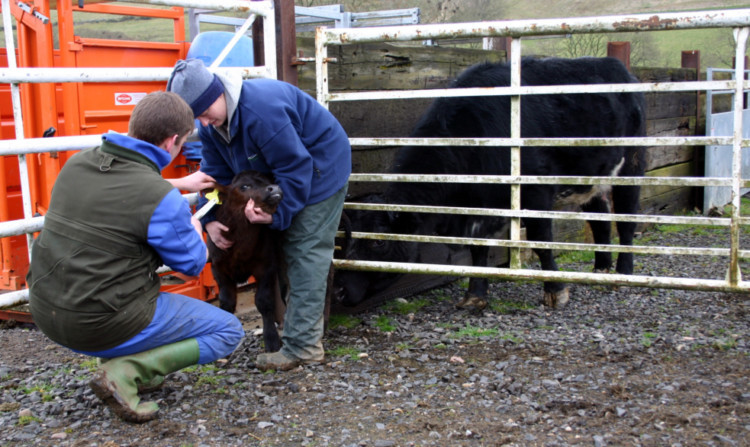Cattle farmers are being encouraged to take time now to think through the steps they can take to reduce the risk associated with working with calving cows and young calves.
As the main spring calving season gets under way, Quality Meat Scotland (QMS) and NFU Scotland are urging cattle farmers to consider how they can reduce the dangers, which regularly result in injuries and fatalities at this time of year.
QMS head of industry development Johnny Mackey, who is due to start calving on his farm in Perthshire in the coming weeks, said: “We’re keen to encourage farmers to take a step back now before calving gets into full swing and think about where the main risks are in terms of safety and what they might be able to do to mitigate these.”
Charlie Adam, chairman of NFU Scotland’s Livestock Committee, who will be calving around 100 suckler cows at Braeside near Alford, pointed out that farmers themselves were very often in the best position to be able to judge the way to reduce the risks at calving time.
“Each farmer knows his own animals and his own set-up in terms of handling facilities and equipment, but it is important they take time to identify the risks now before the tiredness of calving kicks in and judgment can be impaired.
“In many cases the best advice is to make sure you have someone with you to assist if a situation emerges, but it is also worth bearing in mind that in some cases cows may be unsettled by an unfamiliar person getting involved.”
HSE inspector Ann Poyner said one of the greatest risks farmers face is when they are working alone with calving cows and young calves in an open field.
“If farmers have no choice but to work alone with young calves they should ensure that they take steps to make that a safer experience.
“If possible they should stay close enough to a suitable vehicle that can provide protection if a situation emerges, and they should ensure they have their mobile phone so they can summon help if needed,” she said.
Ms Poyner said the danger was frequently not just from the recently-calved cow but from the other animals in the herd becoming agitated.
“There have been occasions when a farmer has been working with a calf and keeping an eye on its mother but failed to notice another animal approach from a different direction.”
She also said that mid-way through the calving period, when farmers and farm staff are getting tired, is a high-risk time for mistakes to be made.
“I have seen scenarios where farmers have made judgment errors or tried to cut corners when tired and, unfortunately, paid the penalty.”
Among the techniques farmers can use to reduce risks are locating a well-strawed creep area in the calving shed for calves, which can be shut off to separate cows and calves and allow the calves to be safely handled.
A piece of equipment which can work well outside, and greatly reduce the risk from over-protective mothers, is a cow catcher. It can be used to separate a cow and calf, or in some models provide a safe restraint to calve a cow.
Ms Poyner said some farmers use ring feeders in a similar manner to safely isolate a calf from its mother, although they were not suitable to restrain a cow.
For more guidance on safety when working with livestock, log on to the Health and Safety Executive website at:
http://www.hse.gov.uk/agriculture/topics/livestock.htm
. For safety information relating to children and animals log onto:
http://www.hse.gov.uk/agriculture/topics/children.htm#animals
